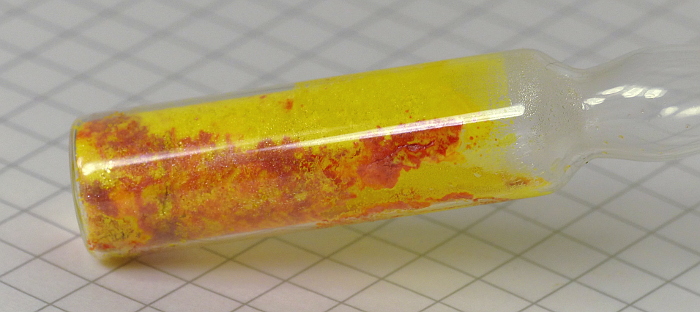Phosphorus heptabromide - PBr7

The picture above shows an ampoule, in which phosphorus pentabromide and phosphorus heptabromide were made. This was made by adding bromine to phosphorus tribromide
in such an amount that after formation of phosphorus pentabromide some
bromine was left over. This excess bromine further reacts to form
phosphorus heptabromide. Both compounds are present in the ampoule and
it nicely demonstrates the color difference between the two bromides.
Phosphorus heptabromide, like phosphorus pentabromide, is only marginally
stable. In the solid state, phosphorus
pentabromide exists as a salt, being PBr4+/Br3‒. In the gas phase it does not exist, on gentle heating it completely decomposes to PBr3 and 2 Br2.
Its structure also shows that phosphorus does not have oxidation state
+7 in phosphorus heptabromide, but oxidation state +5. It is the anion,
which is special in this compound. The anion is a complex of bromide
and bromine, very similar to the much better known tri-iodide ion I3‒. The ion Br3‒ only is stable when combined with large cationic species, such as PBr4+ and Cs+. Another stable salt of Br3‒ is cesium tribromide.
When phosphorus heptabromide is added to water, copious amounts of bromine and hydrogen bromide are formed and phosphoric acid dissolves in the water.